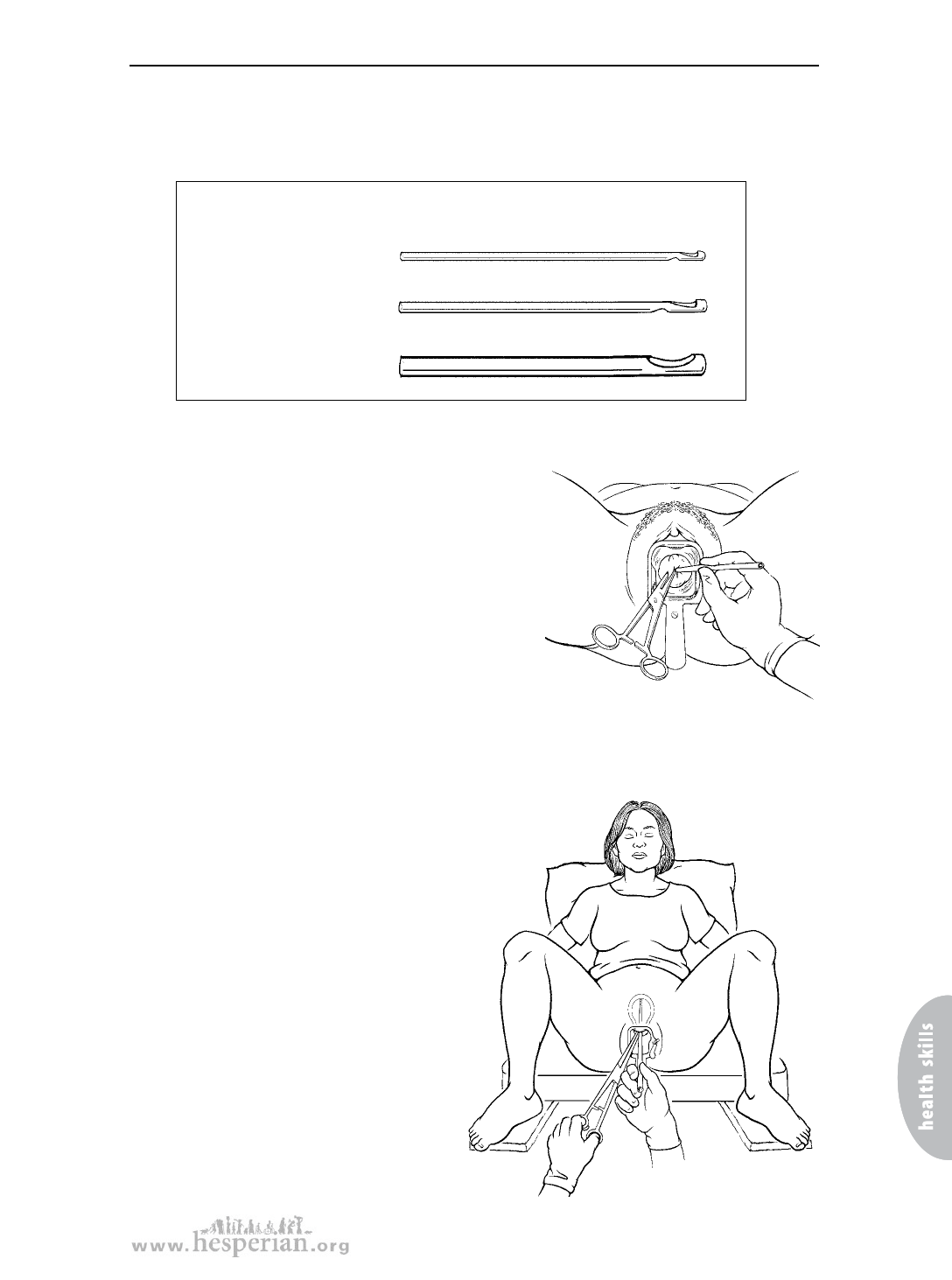
Doing the MVA
10. Choose a cannula. Cannulas come in many different sizes (the size may be
printed on it). The larger a woman’s womb is, the larger a cannula you
should use. This chart gives you an idea of which cannula might work best:
For a woman who is
5 to 7 weeks pregnant...........use a 5 mm cannula
(9 cm long womb)
7 to 9 weeks pregnant .........use a 6 mm cannula
(10 cm long womb)
9 to 12 weeks pregnant........use a 7, 8, 9, 10, or 12 mm cannula
(12 cm long womb)
11. Some types of cannula need an adapter to fit onto some syringes.
If you need an adapter, attach one now.
12. Tell the woman that you are ready to start.
When she is ready, gently push the
sterilized cannula through the opening in
the cervix. Do not let the cannula touch
anything — even the walls of the vagina —
before it goes into the cervix. Sometimes
the cervix is too tight to let a large cannula
in. If this is the case, first insert a small
cannula into the cervix, and then take it out
and put in a larger cannula.
Try gently turning the cannula as it passes through the cervix.
This will make it easier to insert.
As you insert a cannula, pay attention to the
woman to make sure she is not in pain. Ask her
to tell you if the procedure hurts. Sometimes
the expression on a woman’s face will tell
you she is in pain even though she is not
making any sounds.
If the woman is in pain, slow down.
Moving slowly will help prevent
injuries. Ask the woman to take deep
breaths to help her relax and to help
her cervix open.
13. Gently guide the cannula in until
you feel it stop at the top of the
womb. When you feel the top of
the womb, pull the cannula back
just a little. If you need to, you
can let go of the tenaculum.
A Book for Midwives (2010)
425